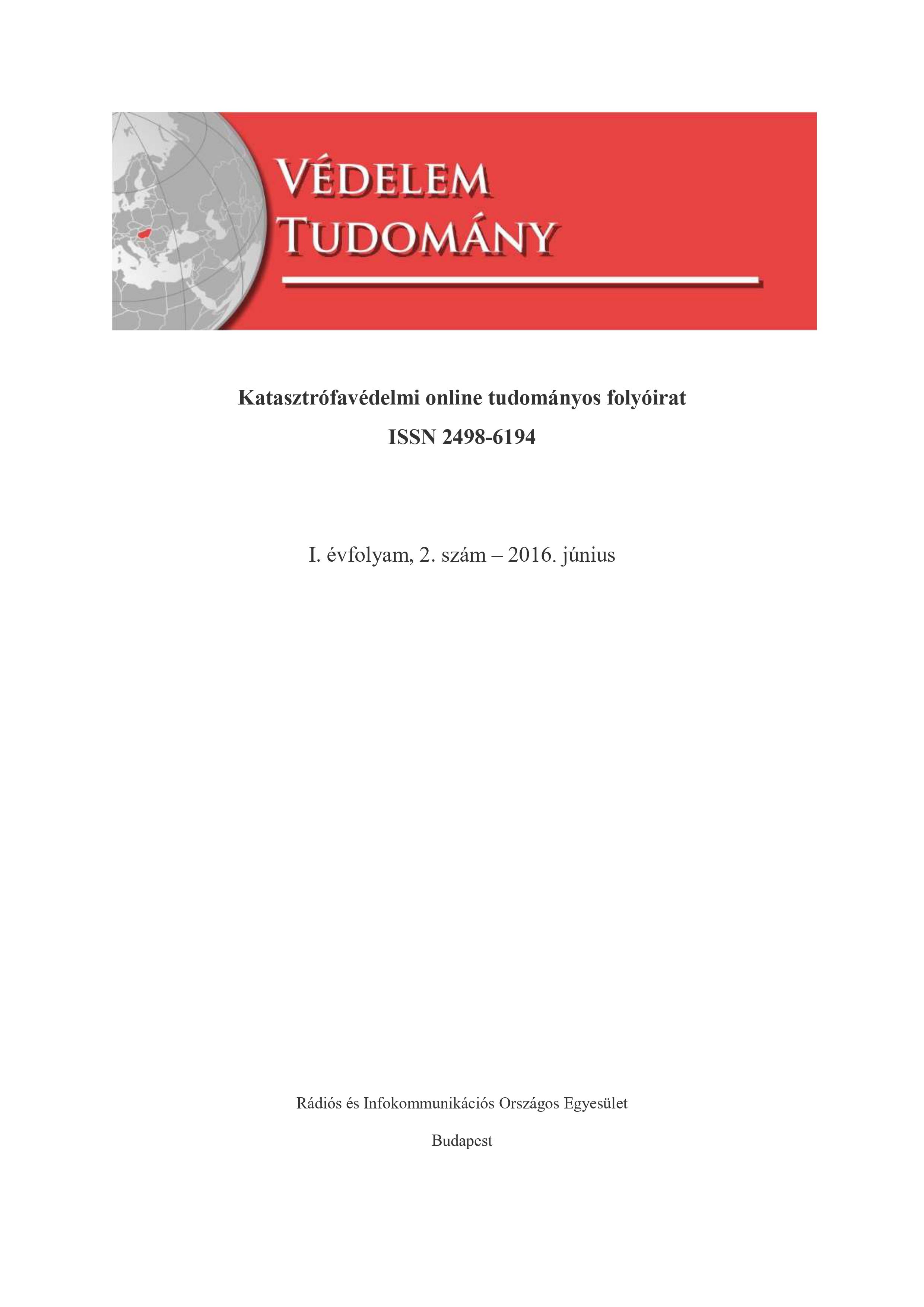effectiveness of fibres in concrete due to fire
Abstract
Recent fire cases indicated again the importance of fire research. Fast development of construction technology requires new materials. Initiation and development of fire are strongly influenced by the choice of construction materials. In addition to their mechanical properties, their behaviour in elevated temperature is also of high importance. Residual compressive strength of concrete exposed to high temperatures is influenced by the following factors (Thielen, 1994): water to cement ratio, cement to aggregate ratio, type of aggregate, water content of concrete before exposing it to high temperatures and the fire process. Therefore, mix design and composition of concrete is of high importance for high temperatures. Our test results indicated that the advantageous influence of polypropylene and steel fibres in concrete subjected to high temperatures is mainly available for thin fibres and not for thick fibres. Strength reduction and
surface cracking are detailed for the tested various fibre reinforced concretes.
References
Balázs L. Gy. – Polgár L.: „A szálerősítésű betonok múltja, jelene és jövője”,VASBETONÉPÍTÉS 1999/1, pp. 3-10., www.fib.bme.hu
Romualdi, J.P., Batson, G.B.: „Behaviour of Reinforced Concrete Beams with Closely Spaced Reinforcement”, ACI Journal, June/1963, pp. 775-790.
Romualdi, J.P., Mandel, J.: „Tensile Strength of Concrete Affected by Uniformly Distibuted Short Lengths of Wire Reinforcement”, ACI Journal, June/1964, pp. 657-671.
ACI (2002), State-of-the-Art Report on Fiber Reinforced Concrete, Reported by ACI Committee 544, reapproved in 2002
Kerekes Zs.: “The oxygen index of oxidised fibres and influencing factors”, Annuel News Vol 1,(50-54) 2003
Kerekes Zs., Tálos Jánosné (2006): Oxidált szálak éghetőségének vizsgálata és minősítése, Magyar Textíltechnika LIX. évf., 3.sz., pp.: 84-87
Restás, Á., „Decision making method in emergency”, Pro Publico Bono: Magyar Közigazgatás; Nemzeti Közszolgálati Egyetem, 2014:(3) pp. 126-136. (2014) ISSN: 2063-9058
Pántya P., Horváth L., Restás Á.,” Disaster management from the viewpoint of fire protection in Hungary: From the effectiveness of fire prevention to the safety of firefighters: Complexity of the firefighters’ work in crisis situations”, Advances in Environmental Sciences: Int. Journal of the Bioflux Society 7:(2) 2015 pp. 272-276. (2015) Online ISSN 2066-7647. Print ISSN 2066-7620
Kordina, K (1997): Über das Brandverhalten punktgeschützter Stahbetonbalkaen, Deutscher Ausschuss für Stahlbeton, Heft 479, ISSN 0171-7197, Beuth Verlag GmbH, Berlin
Thielen, K., Ch.(1994): Strength and Deformation of Concrete Subjected to high Temperature and Biaxial Stress-Test and Modeling, (Festigkeit und Verformung von Beton bei hoher Temperatur und biaxialer Beanspruchung Versuche und Modellbildung), Deutscher Ausschuss für Stahlbeton, Heft 437, ISSN 0171-7197, Beuth Verlag GmbH,Berlin
Khoury, G. A., Grainger, B. N., Sullivan P. J. E., (1985): Transient thermal strain of concrete: literature review, conditions within specimen and behaviour of individualconstituents, Magazine of Concrete Research, Vol 37, No. 132
Schneider U., Weiß R. (1977), „Kinetische Betrachtungen über den thermischen Abbau zementgebundener Betone und dessen mechanische Auswirkungen, Cement and Concrete Research, Vol 11, pp. 22-29
Hinrichsmeyer, K. (1987): Strukturorientierte Analyse und Modellbeschreibung der thermischen Schädigung von Beton, Heft 74 IBMB, Braunschweig
Silfwerbrad J. (2004): Guidelines for preventing explosive spalling in concrete structures exposed to fire, Proceedings of Keep Concrete Attractive, Hungarian Group of fib. 23 25 May 2005, Budapest University of Technology and Economics, Budapest, 2005, pp.: 1148-1156, ISBN 963 420 837 1
Winterberg R., Dietze, R., (2004): Efficient passive fire protection systems for high performance shotcrete, Proceeding for the Second International Conference on Engineering Developments in Shotcrete, Cairnis, Australia, October, 2004 ISBN: 0415358981
Høj, N. P.: Keep concrete attractive - Fire design of concrete structures, Proceedings of fib symposium on Keep concrete attractive, edited by Gy. L. Balázs, A. Borosnyói , 23-25 May 2005, Budapest: pp.1097-1105
Janson, R., Boström, L.: Experimental investigation on concrete spalling in fire, Proceedings for Workshop on Fire Design of Concrete Structures: What now?, What next?, December 2-3, 2004, Milano, (Eds. P. G. Gambarova, R. Felicetti, A. Meda, P. Riva): pp. 2-42
Wille, K., Schneider, H.: Investigation of fibre reinforced High Strength Concrete (HSC) under fire, particularly with regard to the real behaviour of polypropylene fibres, 2002,Lacer Nr. 7: pp. 61-70
Dehn, F., Wille, K.: Micro analytical investigations on the effect of polypropylene fibres in fire exposed high performance concrete (HPC), Proceedings of International RILEM Symposiumon Fibre Reinforced Concretes, BEFIB 2004 20-22 September, Varrenna, Italy (Eds. Prisco, M., Felicetti, R., Plizzari, G. A.): pp. 659-678
Dehn, F., Werther, N.: Fire tests on tunnel elements for M 30 tunnel in Madrid (Brandversuche an Tunnelinnenschallenbetonen für den M 30- Nordtunnel in Madrid),Beton und Stahlbetonbau, 101/9, 2006, Berlin, ISSN 0005-9900 (in German)
Walter, R., Kari, H., Kusterle, W., Lindlbauer, W.: Analysis of the Load-bearing Capacity of Fibre Reinforced Concrete During Fire, Proceedings of Central European Congress on Concrete Engineering 8-9 Sept. 2005, (Ed. Pauser, M.), Graz: pp. 54-59.
Dehn, F., König, G.: Fire resistance of different fibre reinforced high performance concretes, Proceedings of International Workshop High Performance Fibre Reinforced Cement Composites, (Eds. Naaman, A. E., Reinhardt, H., W.), 2003: pp. 189-204
Horiguchi, T.: Fire resistance of hybrid fibre reinforced high strength concrete, Proceedings of International RILEM Symposium on Fibre Reinforced Concretes, (Eds. Prisco, M.,Felicity, R. Pizzeria, G. A.), 2004: pp. 1-18
Horiguchi, T.: Combination of Synthetic and Steel Fibres Reinforcement for Fire Resistance of High Strength Concrete, Proceedings of Central European Congress on Concrete Engineering, 8-9. Sept. 2005, (Ed.: Pauser, M.), Graz: pp. 59-64
Mörth, W., Haberland Ch., Horvath J., Mayer A.,. (2005): Behaviour of Optimized Tunnel Concrete with Special Aggregates at High Temperature, Proceedings of Central Europan Congress on Concrete Engneering 8.-9. Sept. 2005, Graz, pp.: 41-50
Copyright (c) 2016 Defence Science

This work is licensed under a Creative Commons Attribution-NonCommercial 4.0 International License.




